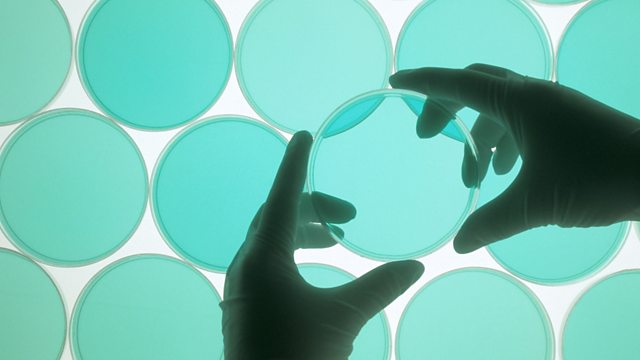08/10/2010
2010 Nobel Prizes for science; Improving hit rates for invitro-fertilisation; Toxic red sludge leak in Hungary; Magnetic brain control of which hand to use; Census for Marine Life
2010 Nobel Prizes
This week the Nobel prizes for medicine, physics and chemistry are announced. After a long wait Robert Edwards takes the prize for his work on in vitro-fertilisation or IVF; Russian physicist Andre Geim takes the Physics prize for his discovery of the carbon compound graphene and chemists Richard Heck, Ei-ichi Negishi and Akira Suzuki take the chemistry prize on their work on developing new ways to make carbon compounds stick together.
IVF – tracking the cells progress
Success rates for IVF vary widely, depending on the age of the mother, the country where the procedure is being carried out and even the clinic where the work is done. But the success of getting a pregnancy from in vitro-fertilisation is still difficult, with many failures. But now researchers have found that by filming the embryos whilst they are still in the laboratory, before transplanting them back into the mother, can give them a better idea of which embryos will be successful.
Hungarian toxic sludge
Waste from an Alumina (precursor to aluminium) production plant in the west of Hungary has been released into the environment, causing injuries and environmental concern. Aluminium is produced by treating the ore Bauxite with caustic (alkaline) solution, before being smelted into the metal. The waste product known as "red mud" is a mixture of alkaline and fine red particulate iron oxide. It's a pretty toxic substance, which can burn the skin and the dust is so fine and sticky, it can coat the gills of fish and choke up plants. The worry now is that the sludge is not contained before it reaches the river Danube.
Hand control
Choosing which hand we use to reach for a pen or a cup of coffee is something we do without thinking. It's not always the case that right-handed people use their right hand, for such mundane tasks. Scientists wanting to know what part of the brain is involved in this decision making used a dangerous-sounding, but harmless device called a 'trans-cranial magnetic stimulator' to excite volunteers' brains to see if they could affect which hand was chosen.
Census for Marine Life
Scientists are celebrating the completion of a decade-long study of life in the world's oceans. The first Census of Marine Life should provide a baseline, so we can tell how human activity is affecting previously unexplored marine ecosystems. The international project involved more than 2,700 researchers from 80 nations, who spent a total of 9,000 days at sea during at least 540 expeditions. It has been described as the most comprehensive study of its kind.
Last on
Broadcasts
- Fri 8 Oct 2010 09:32GMT���˿��� World Service Online
- Fri 8 Oct 2010 14:32GMT���˿��� World Service Online
- Fri 8 Oct 2010 19:32GMT���˿��� World Service Online
- Sat 9 Oct 2010 00:32GMT���˿��� World Service Online
- Sun 10 Oct 2010 03:32GMT���˿��� World Service Online
Podcast
-
![]()
Science In Action
The ���˿��� brings you all the week's science news.


